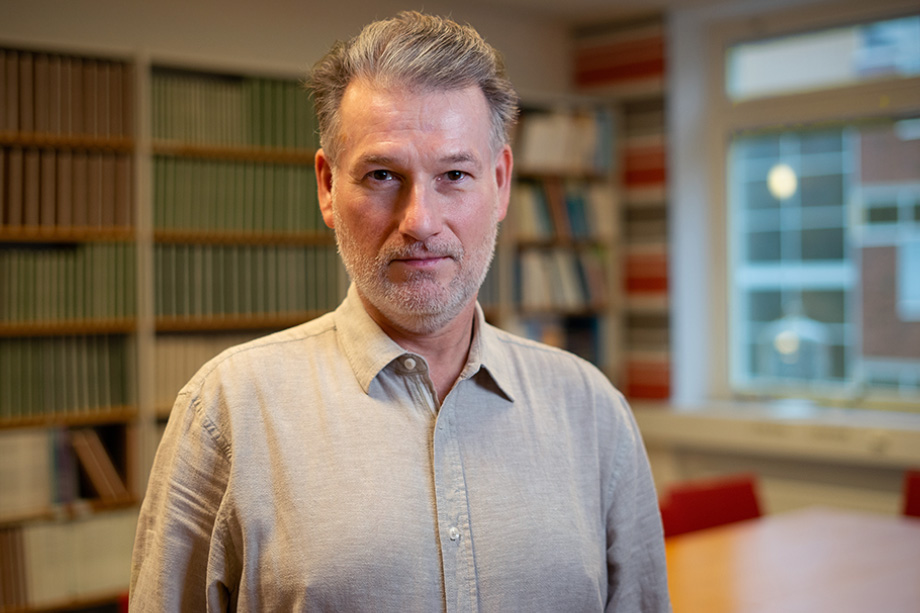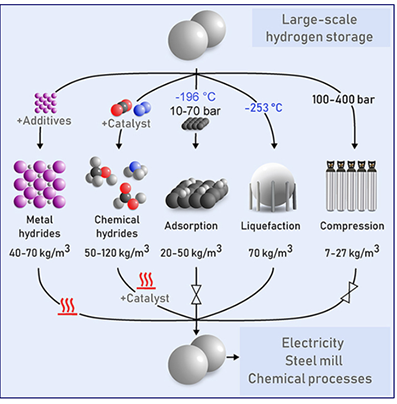The challenge of replacing fossil fuels with hydrogen

Energy in focus
Hydrogen can become an integral part of future energy supply. But first we need to make progress on efficiency and storage issues. That's according to Stefan Grönkvist, professor of energy processes.
In the energy debate, many people emphasise hydrogen as a solution for phasing out fossil fuels. This applies to industrial processes, as a fuel and for balancing the energy system. If produced with electricity from renewable sources, hydrogen only emits water vapour during both production and use.
A major advantage is that hydrogen can be stored - compared to batteries, it is also less expensive - which can make hydrogen interesting in an energy transition, according to Grönkvist . He studies energy systems, how energy technology solutions work in the market, their profitability and infrastructure.
“More and more people are emphasising the advantage of using hydrogen for storage because we have an increasing share of unplanned electricity production,” he says.
The idea is that electricity production from, for example, solar and wind power, where the supply is not dispatchable, will be balanced by a hydrogen energy storage system that can generate electricity when the wind is not blowing or the sun is not shining. Producing hydrogen when electricity prices are low and depleting the storage when electricity prices are higher can be profitable.
Losses in transition
One challenge to making the maths work is to reduce the energy lost in the production of hydrogen. Most hydrogen is currently produced using fossil fuels, while the more environmentally friendly electrolysis process splits water molecules into hydrogen and oxygen, which requires a lot of electrical energy.
Even the next step - if the hydrogen is converted into electricity using fuel cells - comes at the cost of significant losses. Over the entire cycle from and to electricity, at least half of the energy input is lost. How to achieve higher efficiency is being investigated in a project called PUSH led by KTH.
The form of storage also needs to be developed, as hydrogen is very space-consuming. Compressed hydrogen is the technology used today. But if hydrogen is to be used on a broad front, we need to look at more possibilities, Grönkvist says.
The alternatives could be to convert hydrogen into another chemical form, such as methanol, methane or ammonia, or as a liquid organic.
Building systems with pipelines

In a study for the industrial venture Hybrit, which produces fossil-free Swedish steel, Grönkvist's research team found that methanol was competitive with storage in lined rock caverns (walls lined with a material as a waterproofing layer). A liquid organic form of hydrogen storage has also come out well in evaluations.
“The best storage solution will vary from situation to situation. It is important that we do not lock ourselves into any one technology, but continue to study different solutions.”
One opportunity for hydrogen storage may be if there will be investment in new hydrogen transport infrastructure in Sweden.
“If pipelines are built for hydrogen transport, that infrastructure can also be used to store hydrogen,” Grönkvist says
Fuel for lorries
He emphasises the potential of hydrogen as a fuel for heavy transport. Not least because of the refuelling time, which is at least three times faster than for batteries, and the range, up to twice as long compared to battery operation, according to Grönkvist.
It is difficult to predict whether there is really good economics for the widespread use of hydrogen in future energy systems.
“We have an extensive social discussion about hydrogen today, and there is good potential, but it is important to be cautious and not to invest in it lightly,” Grönkvist says.
Text: Christer Gummeson ( gummeson@kth.se )
